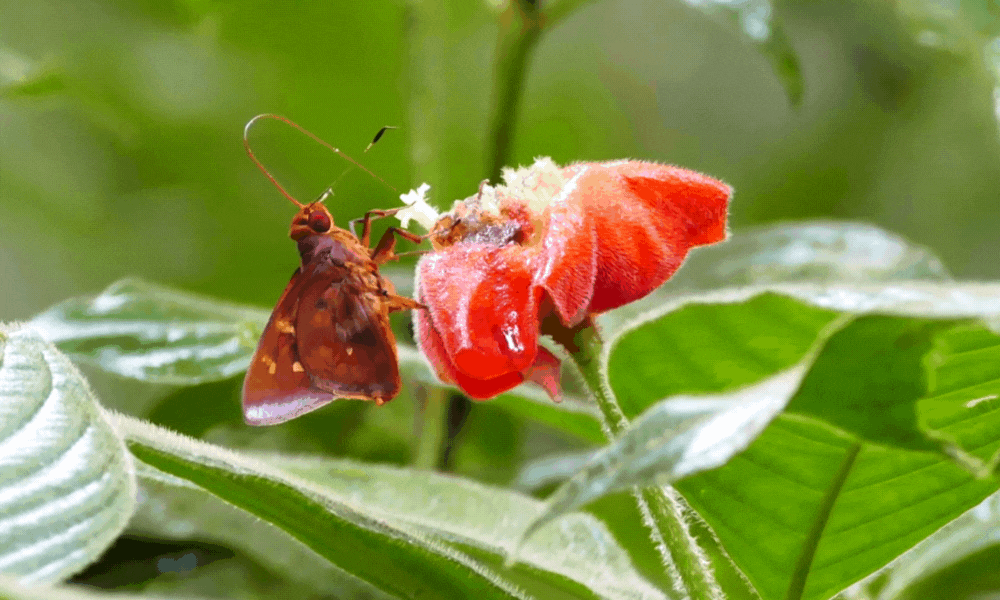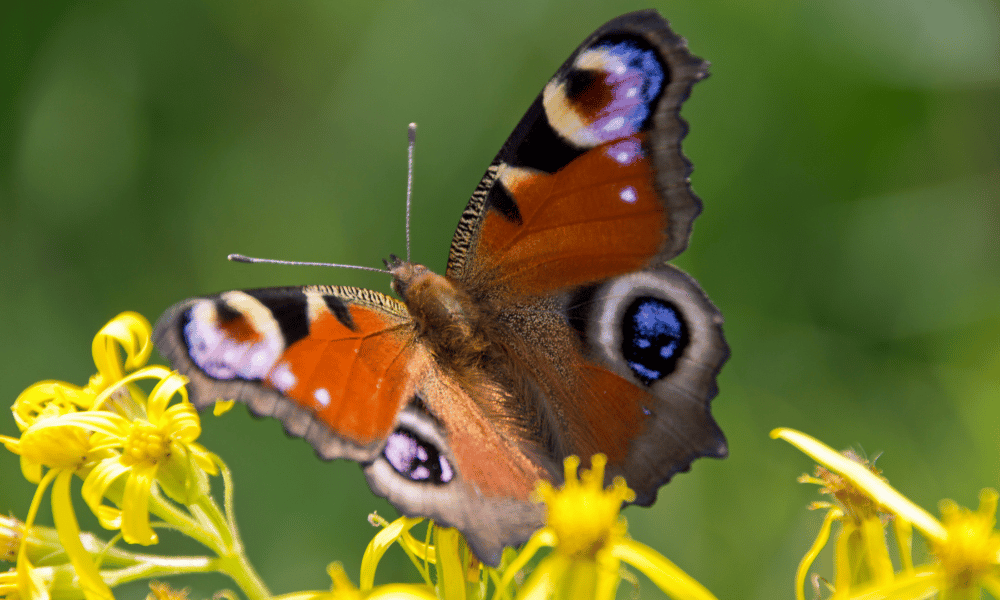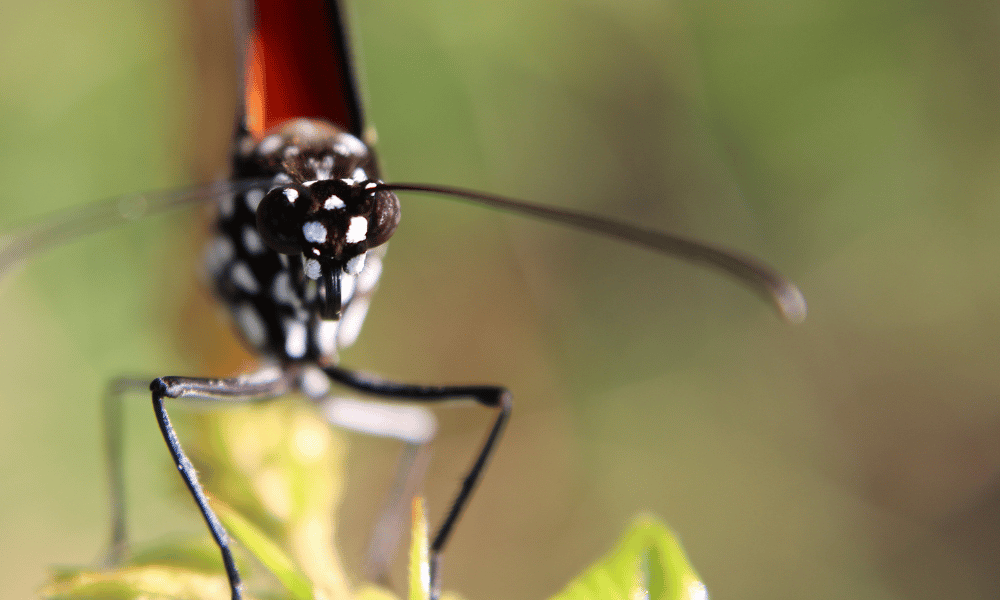While butterflies are beautiful and docile, are they something we should be cautious around? We know that bees can sting and thus give them their space. But what about butterflies? Do they have the ability to harm humans? Do butterflies bite?
No, butterflies do not bite. Butterflies lack a mouth at all. Instead, they have a long straw-like organ to drink nectar from plants. Luckily for us, butterflies are docile insects that have no way of harming humans.
Do Butterflies Have Teeth?
Butterflies do not have teeth. Since butterflies do not have a mouth, they have nowhere to grow teeth. Instead of chewing food like other insects or animals, butterflies use their proboscis to sip nectar from flowers as their only food source.
The butterfly’s proboscis is a long mouth organ that curls up where a mouth would form on the butterfly’s body. You can see the butterfly’s proboscis if you are lucky enough to get close enough!

Interestingly, when the butterfly emerges from the cocoon, the proboscis is slit down the middle. The butterfly then begins to extend and retract their proboscis until it merges into one piece.
If the butterfly has a problem with its proboscis, or if it is deformed, it will slowly die as it cannot eat or gather nutrition.
Some butterflies have an advanced proboscis that allows them to also eat pollen. Pollen contains amino acids and allows the butterfly to create stronger protein structures within their bodies.
Sadly, butterflies lack a real way of defending themselves from predators. Instead, they rely heavily on camouflaging into their surroundings or scaring away predators with bright wing patterns and fake eyes.
Our 14 Fun Facts About Butterflies
Do Butterflies Sting?
Before we talk about butterflies, let’s talk about bees. We all know that bees can sting. Some bees, like carpenter bees and bumble bees can sting repeatedly as they do not lose their stingers when they sting.
Honeybees have a stinger with a barb on the end that imbeds in the victim’s skin. When the honeybee flies off, the stinger becomes dislodged from its body and pulls out the venom sac in its abdomen, killing them. But why do bees have stingers?
Bees have stingers because their stinger is part of their reproductive tract. This is why male bees cannot sting. Female bees use their stingers to lay eggs. Even though the female worker honeybee does not lay eggs, as this is the sole duty of the queen bee, they have a stinger that they can utilize.
But what has this got to do with bees?
Butterflies are pollinators, like bees. Butterflies also lay eggs… So it is natural to assume that butterflies may also have a stinger, right?
Fortunately for us, butterflies do not have a stinger. In fact, butterflies lack any real way of defending themselves.
Butterflies have no way to actively fight off predators. Instead, they have passive ways to avoid predators. This includes having bright colours to appear poisonous and the ability to camouflage into their surroundings.
Unfortunately, butterflies have several predators including birds, snakes, wasps, rats, frogs and toads.
Are Butterflies Dangerous?
Since butterflies have no mouth to bite us with or stinger to sting with, butterflies are not considered to be dangerous.
Humans are more of a threat to butterflies than vice versa.
Sadly, humans do a lot of damage to butterfly populations unintentionally every year. We mow over them in our lawn mowers as they hide in grass or we weed back plants that contain their eggs. We also tend to drive into them on roadways. Sometimes they can get sick from things we spray on the fields.
In the wild, butterflies have many enemies and very few ways to protect themselves. They rely fully on blending into their surroundings or scaring away their predators with bright and bold wing patterns.
In the case of the peacock butterfly, they have markings that look like eyes on their wings that help deter predators.

Many predators come for butterflies in their earlier stages. Butterfly eggs, larvae, caterpillars, and those in the cocoon are all easy prey. But not to fret, adult butterflies have adapted over the years to evade predators or even scare them off.
Summary
Butterflies are essentially harmless creatures. Since they have no mouth, they have no way of biting. They also lack any stinger. We can enjoy the beauty of butterflies without worrying about our safety.
Sadly, since butterflies lack any real way of defending themselves, they have to rely solely on hiding from their predators.
Adult butterflies use their wings to blend in with their surroundings. The underside of butterfly wings tends to allow them to blend into woods, trees, and other natural foliage.
When the butterfly opens its wings, we see bright coloured and bold patterns that are used to scare away predators. Some butterflies, like the peacock butterfly, have patterns that look like eyes.







